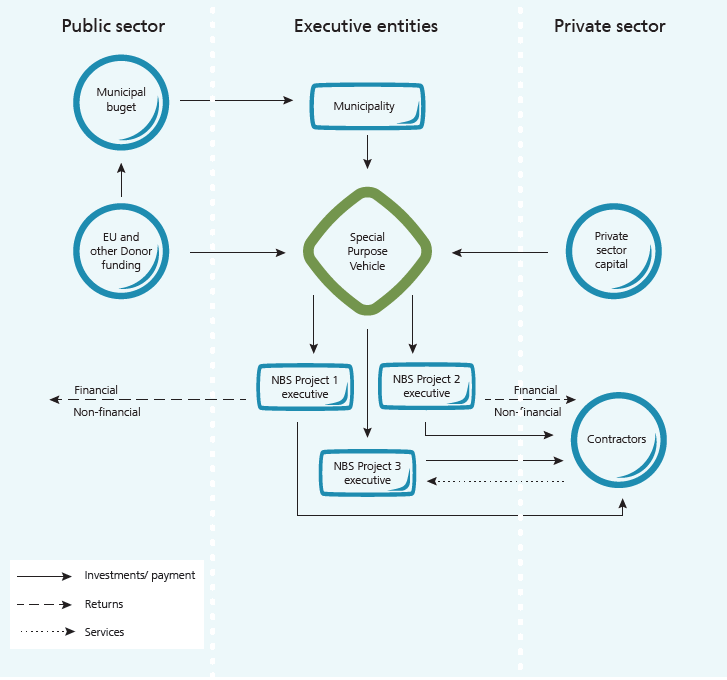
Public-Private Partnerships
Public-Private Partnership (PPP) is an umbrella concept to define different modalities of "long-term contract(s) between a private party and a government (public) entity, for providing a public asset or service, in which the private party bears the significant risk and management responsibility and remuneration is linked to performance". The types of PPP vary according to three basic parameters: Type of asset, Distribution of functions among public and private partners and Payment mechanism.
In all different PPP arrangements, as public resources intertwine with private ones, the inclusion of external, independent observers to guarantee the legality of the contracts and of the financial transactions, especially once operations begin, is recommended. The financing of PPPs could be reinforced by creating a new institutional entity called the Special Purpose Vehicle (SPV). Established by blending public and private funds, SPV conducts the construction and operation of the project, with its own budget and distribution of costs, expenses and revenues according to the respective contributions and risks are taken by each of the participating institutions.
ADVANTAGES & DISADVANTAGES
• Private know-how and flexibility can provide projects with superior efficiency, in terms of financing, construction, maintenance and operation quality and cost.
• Allocation of financial risks can be more efficiently shared among the partners involved, according to their profiles and roles in the partnership.
• In case of well-designed contractual agreements, PPP investments can combine the representation of the public interest with the efficiency-seeking motivation of the private sector.
• It requires a long-term commitment from the parties involved
• As these are long-term contracts between two or more entities of different legal nature, it requires significant technical capacity from the public institution to plan, procure, contract, execute and monitor all planned activities.
RISKS
• Construction and Completion Risks are the difference between planned and actual costs of construction, as well as delays and qualitative performance issues of the delivered project.
• Operating Risks, including changes in the costs of inputs (energy, water), salaries and operational performance.
• Force Majeure is external, unforeseeable and unavoidable events, which render the execution of the work impossible, and change in regulation.
• Environmental Risk or the risk of non-compliance with environmental regulations and standards set either by national laws or international financial institutions can be a problem.
• Social Risk, relating both to the risks caused by impacts of construction and operation on local populations or on society and users, need to be mitigated as well.







